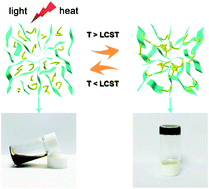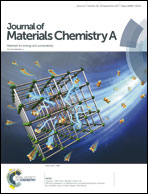Reversible 3D self-assembly of graphene oxide and stimuli-responsive polymers for high-performance graphene-based supercapacitors†
Abstract
The assembly of graphene into functional macrostructures has attracted intense interest in recent years. Herein we report the first reversible 3D self-assembly of graphene oxide/reduced graphene oxide with stimuli-responsive polymers poly(N-isopropylacrylamide) (PNIPAM) or poly(propylene oxide) (PPO), which results in a photo/thermal reversible supramolecular graphene/polymer composite hydrogel with adjustable sol–gel transition temperature. The assembly method is extremely convenient and straightforward based on a new assembly mechanism, i.e., PNIPAM or PPO chains with temperature-responsive hydrophilicity/hydrophobicity can reversibly adsorb onto and cross-link the graphene sheets via noncovalent interactions. Utilizing the reversibility of the 3D assembly, we further develop a new strategy to prepare a graphene macrostructure with minimum re-stacking of graphene sheets and an ultrahigh specific surface area (∼1410 m2 g−1), based on which we successfully fabricate a supercapacitor electrode and a flexible/foldable all-solid-state supercapacitor with remarkable electrochemical performance (292 F g−1 at 1 A g−1 and 215 F g−1 at 100 A g−1).



 Please wait while we load your content...
Please wait while we load your content...